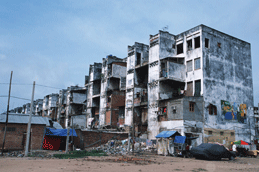
The United Nations has released the first-ever Global Assessment Report on Disaster Risk Reduction.
The 200-page report was prepared by the UN International Strategy for Disaster Reduction (ISDR), which oversees the development of disaster reduction policy.
It finds that global disaster risk is on the rise because of unsafe cities, environmental destruction and climate change—factors that jeopardise the lives of hundreds of millions of people worldwide.
Low- and middle-income nations are becoming increasingly susceptible to disasters due to a lack of government attention, unplanned urbanisation and deplorable economic conditions, the study notes.
It also finds that the risk is felt most acutely by people living in poor rural areas and slums.
In order to address the situation, the report calls for a radical shift in development practices and a major new emphasis on resilience and disaster planning.
Recommended actions include limiting the impact of disasters on populations by improving squatter settlements, providing land and infrastructure for the urban poor, strengthening rural livelihoods and protecting ecosystems, among other suggestions.
The study is based on a massive database, with information culled from UN, governmental, scientific and academic sources over a 32-year period from 1975-2007.
It was developed with the financial support of Bahrain, the Global Facility for Disaster Reduction and Recovery (GFDRR), the United Nations Development Programme (UNDP), the United Nations Environment Programme (UNEP), the Government of Norway, the Government of Switzerland, the ProVention Consortium and the German Technical Cooperation (GTZ).




